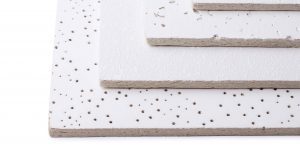
Drop ceilings are a great way to hide imperfections in your home’s ceiling and give you more room to work with. They’re also a great way to add soundproofing and make the room look neater and cleaner. If you’re ready to install an acoustic drop ceiling in your home, it can be done yourself or by hiring a contractor. Here’s how: Acoustic Drop Ceiling Contractor in Richfield MN
Measure the Area
Once you know how large your area is and what type of drop ceiling you want to install, it’s time to measure out the space. The width, length, and height are all important measurements. You’ll also want to take note of any obstructions that may interfere with your drop ceiling installation.
If the room is not square (which isn’t uncommon), measure both diagonals—this will give you an accurate idea of how much material you need for the project.
Get a Building Permit If Needed
If you’re in a city that requires building permits, make sure to apply for one. If your city doesn’t require them, skip this step!
Building permits are important because they ensure that your acoustic drop ceiling is installed correctly and safely. The inspector who checks out your project will be able to tell if the acoustical tiles have been installed correctly by doing things like measuring the distance between the beams and checking that there is enough space around each beam for the installation of the tiles. They may also check to see if there are any other safety issues related to how the acoustical tiles were installed (like too much weight on top of one another).
Unscrew and Remove All the Ceiling Joists and Sheetrock
Next, unscrew and remove all the ceiling joists. You can use a crowbar to remove them. Be careful not to damage your ceiling below or any of its supporting walls. You may need to use a circular saw to cut through stubborn joists that have been nailed into place. If you don’t have access to such an instrument, use a hammer on each nail individually until they come loose.
You’ll remove the old sheetrock by using a putty knife to scrape off the old adhesive and a hammer to tap out nails. Be sure to wear eye protection, a dust mask, and work gloves while removing the sheetrock.
Install the Ceiling Tiles and Trim
Next, install acoustic ceiling tiles and grid system by following the manufacturer’s instructions for installing a grid. First, cut it to size with a hacksaw, then fasten it to the joists with nails or screws. If you are using panels instead of tiles, attach them before installing your grid system. Check all of your measurements during installation to ensure that everything fits correctly and looks right when finished
When you’ve finished installing an acoustic drop ceiling, the trim needs to be added around the outside edge of the ceiling panels. You can use a hammer and nails to attach it, but if you want it done perfectly right, we recommend using a nail gun. The best way to make sure that everything is straight is with a level on every corner.
You can also use a pencil to mark where you will be placing each piece of trim by drawing two lines between each stud. This makes it easier when cutting them down to size after they are installed by removing them from their spot for more room when cutting them out with a hacksaw or jigsaw (depending on what kind of material was used).
Insert the Ceiling Tiles
To complete the installation of an acoustic drop ceiling, you’ll need to insert the tiles into their positions. You can do this using either a screwdriver or a hammer. For tight spaces, use a screwdriver to secure each tile into place. For larger areas where it’s difficult to get behind the grid system and tighten screws, use a hammer and tap each tile into place.
To ensure that your new acoustic drop ceiling is installed correctly, check carefully that all tiles are level with each other and secured tightly into place.
DIY or Hire a Contractor
Now, if you’re up for a little DIY and don’t mind some light lifting, acoustic drop ceilings are fairly straightforward to install. The most important thing is to ensure that your drop ceiling panels are level with one another so that the seams between panels align perfectly. If they’re not aligned properly, it’s going to look like someone has been playing connect-the-dots with them. But if your panels are level and in place, then you can move on to wiring your fixtures into electrical boxes built into the grid system beneath each tile with metal box connectors (not included).
Because acoustic tiles are lightweight compared with traditional ones made from plaster or gypsum board (drywall), they tend to be easier to handle than those alternative materials when installing them yourself. Of course, this doesn’t mean that there isn’t any danger involved—after all, dropping a piece of heavy drywall onto your foot would hurt! So make sure you have good lighting and plenty of help before attempting an installation on your own or hiring a professional contractor to do the job for you.
Acoustic Drop Ceiling Contractor in Richfield MN
Now that you know how to install acoustic drop ceilings, it should be easier to decide whether or not they are the right choice for your home. If you have any further questions about these products or their installation, please feel free to contact us at any time at Home Drywall and Painting in Richfield, Minnesota. We would love nothing more than to help you make an informed decision when it comes time for remodeling your home!
